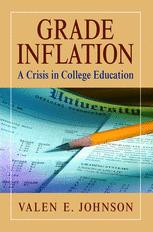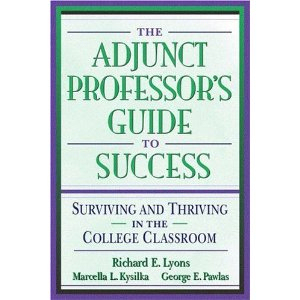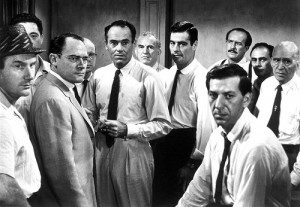Why Are Students Not Learning? 0
By Thomas H. Benton
Lack of student preparation. Increasingly, undergraduates are not prepared adequately in any academic area but often arrive with strong convictions about their abilities. So college professors routinely encounter students who have never written anything more than short answers on exams, who do not read much at all, who lack foundational skills in math and science, yet are completely convinced of their abilities and resist any criticism of their work, to the point of tears and tantrums: “But I earned nothing but A’s in high school,” and “Your demands are unreasonable.” Such a combination makes some students nearly unteachable.
Grade inflation. It has become difficult to give students honest feedback. The slightest criticisms have to be cushioned by a warm blanket of praise and encouragement to avoid provoking oppositional defiance or complete breakdowns. As a result, student progress is slowed, sharply. Rubric-driven approaches give the appearance of objectivity but make grading seem like a matter of checklists, which, if completed, must ensure an A. Increasingly, time-pressured college teachers ask themselves, “What grade will ensure no complaint from the student, or worse, a quasi-legal battle over whether the instructions for an assignment were clear enough?” So, the number of A-range grades keeps going up, and the motivation for students to excel keeps going down.
Student retention. As the college-age population declines, many tuition-driven institutions struggle to find enough paying customers to balance their budgets. That makes it necessary to recruit even more unprepared students, who then must be retained, shifting the burden for academic success away from the student and on to the teacher. Faculty members can work with an individual student, if they have time, but the capabilities of the student population as a whole define the average level of rigor that is sustainable in the classroom. At some institutions, graduation rates are so high because the academic expectations are so low. Failing a lot of students is a serious risk, financially, for the college and the professor.
Student evaluations of teachers. Although a lot of emphasis is placed on research on the tenure track, most faculty members are not on that track and are retained on the basis of what students think of them. The common wisdom, for the untenured, at least whether it is true or not is to find ways to keep the students happy: Expect little, smile a lot, gesture freely, show movies, praise them constantly, give high marks, bring cookies on evaluation day. Wise administrators may read confidential evaluations in context, but students can now use the Internet to retaliate against professors in ways that can damage their ability to sustain minimal enrollments in their classes.
 Enrollment minimums. Students gravitate to lenient professors and to courses that are reputedly easy, particularly in general education. Some students may rise to a challenge; many won’t. They’ll drop, withdraw, or even leave a college that they find too difficult. If you are untenured and your courses do not attract enough students, then you can become low-hanging fruit for nonrenewal. If you are tenured, then it means being “demoted” to teach service courses. In such contexts, the curriculum populated by electives and required courses competing for the lowest expectations is driven increasingly by student demand rather than by what a community of scholars believes undergraduates should know.
Enrollment minimums. Students gravitate to lenient professors and to courses that are reputedly easy, particularly in general education. Some students may rise to a challenge; many won’t. They’ll drop, withdraw, or even leave a college that they find too difficult. If you are untenured and your courses do not attract enough students, then you can become low-hanging fruit for nonrenewal. If you are tenured, then it means being “demoted” to teach service courses. In such contexts, the curriculum populated by electives and required courses competing for the lowest expectations is driven increasingly by student demand rather than by what a community of scholars believes undergraduates should know.
Lack of uniform expectations. It is impossible to maintain high expectations for long unless everyone holds the line in all comparable courses and we face strong incentives not to do that. A course in which the professor assigns a 20-page paper and 200 pages of reading every week cannot compete with one that fills the same requirement with half of those assignments. Faculty members cannot raise expectations by themselves, nor can departments, since they, too, are competing with one another for enrollments.
 Contingent teaching. Perhaps the most damaging change in higher education in the last few generations has been the wholesale shift in the composition of the teaching staff. Formerly, full-time, tenured faculty members with terminal degrees and long-term ties to the institution did most of the teaching. Such faculty members not only were free to grade honestly and teach with conviction but also had a deep understanding of the curriculum, their colleagues, and the institutional mission. Now undergraduate teaching relies primarily on graduate students and transient, part-time instructors on short-term contracts who teach at multiple institutions and whose performance is judged almost entirely by student-satisfaction surveys.
Contingent teaching. Perhaps the most damaging change in higher education in the last few generations has been the wholesale shift in the composition of the teaching staff. Formerly, full-time, tenured faculty members with terminal degrees and long-term ties to the institution did most of the teaching. Such faculty members not only were free to grade honestly and teach with conviction but also had a deep understanding of the curriculum, their colleagues, and the institutional mission. Now undergraduate teaching relies primarily on graduate students and transient, part-time instructors on short-term contracts who teach at multiple institutions and whose performance is judged almost entirely by student-satisfaction surveys.
Time constraints. Contingent faculty members, who are paid so little, routinely teach course loads that are impossible to sustain without cutting a lot of corners. One would think that tenured faculty members, at least, would have the time to focus on student learning, but, as the proportion of tenured professors has declined, the service expectations on the ones remaining have increased considerably, turning a growing number of tenured professors into part-time administrators. At the same time, research expectations for tenure-track faculty members have escalated steadily. Teaching becomes a distraction from the activities that are most highly rewarded. The easiest way to save time in the classroom is to limit assignments that require personalized feedback and to give grades that are higher than students expect.
Curricular chaos. Many colleges are now so packed with transient teachers, and multitasking faculty-administrators, that it is impossible to maintain some kind of logical development in the sequencing of courses. Add to that a lack of consensus about what constitutes a given scholarly field and a lack of permanent faculty members to provide coverage of a discipline. As a result, some majors have become an almost incoherent grab bag of marketable topics combined with required courses that have no uniform standards. Students are now able to create a path through majors that allows them to avoid obtaining what were once considered essential skills and disciplinary knowledge.
 Demoralized faculty members. Students may be enjoying high self-esteem, but college teachers seem to be suffering from a lack of self-confidence. It starts in graduate school, when we begin to fear we are destined for unemployment, when we compare our pay with that of comparably educated professionals, and when we realize that for all the sacrifices that we’ve made, often with idealistic motives we are held in slight regard. Many people even think of us as subversives who “hate America.” During the latest economic crisis perhaps the endpoint of a 40-year slide many of us have felt as if we’ve become expendable, if we are employed at all. That makes it hard for us to make strong demands on our students or, perhaps more importantly, to stand up for any kind of change in our institutions.
Demoralized faculty members. Students may be enjoying high self-esteem, but college teachers seem to be suffering from a lack of self-confidence. It starts in graduate school, when we begin to fear we are destined for unemployment, when we compare our pay with that of comparably educated professionals, and when we realize that for all the sacrifices that we’ve made, often with idealistic motives we are held in slight regard. Many people even think of us as subversives who “hate America.” During the latest economic crisis perhaps the endpoint of a 40-year slide many of us have felt as if we’ve become expendable, if we are employed at all. That makes it hard for us to make strong demands on our students or, perhaps more importantly, to stand up for any kind of change in our institutions.
I have presented the issues affecting undergraduate learning as a list, but it makes more sense to think of them as a Venn diagram of overlapping and mutually reinforcing circles. Of course, they do not amount to a complete overview of the problem; I have tried to represent a cluster of concerns that I believe are common among faculty members in the U.S. educational system.
As Arum and Roksa note, any attempt to shift the responsibility for raising standards entirely onto college teachers is bound to fail, because we “operate in broader social, fiscal, regulatory, and political contexts. The responsibility for change rests not only with college campuses but beyond.” The authors propose “externally mandated accountability systems on public colleges and universities,” similar to No Child Left Behind, but they also note that the causes of the declining educational outcomes are broader than anything that can be dealt with by the government or educational institutions alone. Education is a billion-dollar tail on a trillion-dollar dog.
More than anything, change in four-year colleges depends on choices made by millions of parents and students.
One might think that a nationwide assessment project like the Collegiate Learning Assessment would help students and their parents to select colleges on the basis of documented educational outcomes. Such data comparisons might introduce market-based competition that would encourage support for stronger academic programs. But Arum and Roksa doubt whether “greater institutional transparency in reporting student academic outcomes” will lead consumers to seek a more challenging education. The authors write that they are “profoundly skeptical that students, in general, empowered as consumers or clients, will necessarily place much of an emphasis on this particular collegiate outcome.”
If they are right about that, and I hope they are not, it means that our “failing” system of higher education actually is working the way it is supposed to, according to the dictates of the market. The patterns of selection and resource allocation and the rising costs of college education are not driven by educational needs so much as they are the result of competition for the most enjoyable and least difficult four-year experience, culminating in a credential that is mostly a signifier of existing class positions.
And that’s why, in the next column, I want to reflect on this system from the perspective of students and their parents. What could they possibly be thinking? What kind of interlocking system of perverse incentives is motivating them to make such choices?
Thomas H. Benton is the pen name of William Pannapacker, an associate professor of English at Hope College, in Holland, Mich. He writes about academic culture. (And very well, if I do say so myself, Eric.)
